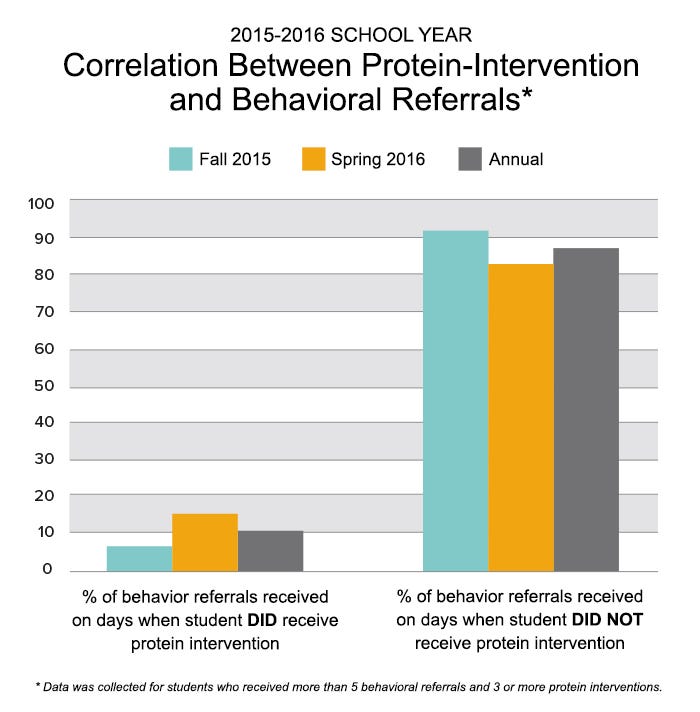Low-glycemic index snacks a better choice for high-risk students.
April 13, 2017

Could protein-based snacks such as hard-boiled eggs lead to improved classroom behavior? That could be the case, according to a group of educators in one Iowa school district.
Jennifer Best, extension educator at Iowa State University Extension & Outreach, worked closely with school staff to test the theory on a small scale. Together, they developed and launched a pilot project during the 2015-16 school year called the “Protein Intervention.”
The Protein Intervention pilot project substituted protein-based snacks, such as hard-boiled eggs, string cheese or yogurt, for the carbohydrate snacks typically given to students visiting the school nurse. Schools often keep a variety of snacks on hand for this purpose, particularly within districts that serve student populations considered at risk.
Students were allowed to choose from among the protein-based snacks available, with the overwhelming majority preferring hard-boiled eggs. The school nurse kept track of each student's visit, snack choice, date and time, in order to measure the effects of the pilot program.
The results were striking, with the tabulated data showing a relationship between protein snack consumption and behavior referrals. At the end of the school year, students who received more than three protein snacks and had more than five behavioral referrals were included in the data set. Data showed that only 11.5% of these students’ behavioral referrals occurred on days when they received the protein intervention. The other 88.5% of these students’ behavioral referrals occurred on days when they did not visit the nurse and request protein.
According to the school's report, “We have hypothesized that this staggering difference results from alleviation of hunger with a high-protein, low-glycemic index food that offers healthy, sustained energy with minimal blood sugar fluctuations.”

Students may be considered “at risk” due to several factors, including lower socioeconomic status, which can be related to food insecurity. Snacks help supplement school meal programs, yet the crackers, cereal, granola bars or fruit snacks schools typically offer to hungry students, while inexpensive and shelf-stable, are high on the glycemic index scale. These snacks exacerbate students' blood sugar fluctuations and, according to the report, can contribute to the challenging behaviors witnessed by teachers in schools with a high-risk student population.
“Hard-boiled eggs are the perfect choice for a program like the Protein Intervention. Eggs contain less than 1 g of carbohydrate and, as such, do not influence blood glucose. In addition, eggs are a nutrient-rich food, with one large egg containing 6 g of high-quality protein and varying levels of 13 vitamins and minerals,�” said Dr. Tia Rains, executive director of the Egg Nutrition Center, the scientific research arm of the American Egg Board. “We look forward to results from other schools implementing the Protein Intervention program with their students to see if similar benefits are observed.”
The report concluded that, “with a systematic and sustained effort of offering protein within high-need schools, behavior issues can be reduced, which ensures less time spent out of the classroom and a higher likelihood of academic achievement.”
Staff calculated that, for a cost of $1,000, one school could be supplied with the food needed for a year’s worth of Protein Intervention. In response, the Iowa Egg Council is supplying the funds for one school for an entire year’s worth of snacks to continue the Protein Intervention project.
You May Also Like

.png?width=300&auto=webp&quality=80&disable=upscale)

